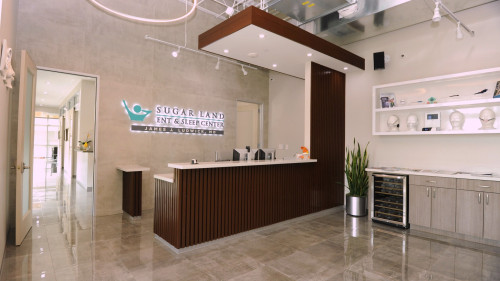Sinus Infection (Sinusitis)
The symptoms of sinus inflammation or "sinusitis" are often mistaken as being simply "allergies" because, like nasal allergies, sinusitis also causes you to feel congested. However, symptoms like facial pressure, facial pain, headaches, recurring sinus infections, or a change or loss of the sense of smell are symptoms specific to sinusitis.
The most successful way to improve sinus health is to augment medical therapies with procedures that restore sinus ventilation and drainage that sinuses require to be healthy.
We offer comprehensive office-based treatment solutions that resolve your sinus symptoms.
-
 Balloon Sinuplasty Surgery
Balloon Sinuplasty Surgery
-
 Office-Based Sinus Surgery
Office-Based Sinus Surgery
 Office-Based Sinus Surgery
Office-Based Sinus SurgeryUtilizing topical and local anesthetics, most patients sinonasal procedures can be performed in the office, avoiding the need for intubation, exposure to potent sedating and narcotic medications, and often expensive facility fees, without sacrificing outcomes. These procedures are typically performed in 30-60 minutes.
-
 Septoplasty (Deviated Nasal Septum)
Septoplasty (Deviated Nasal Septum)
-
 Operating Room Based Sinonasal Surgery
Operating Room Based Sinonasal Surgery
 Operating Room Based Sinonasal Surgery
Operating Room Based Sinonasal SurgeryThe vast majority of sinonasal procedures can be performed in the office setting. However, occasionally facility-based procedures performed in an operating room suite are required for extensive sinonasal disease or severe nasal septal deformities. Facilities are also utilized based on patient preference or desire.
-
 Image-Guided Sinus Surgery
Image-Guided Sinus Surgery
-
 Nasal Turbinate Reduction
Nasal Turbinate Reduction
-
 In-Office Nasal Endoscopy
In-Office Nasal Endoscopy
 In-Office Nasal Endoscopy
In-Office Nasal EndoscopyHigh-resolution photographs of the interior of your nasal cavity are obtained during a painless examination with a small, 5mm endoscope attached to an HD camera. Dr. Ludwick reviews your photos with you on our large screen monitors helping you understand the causes of your symptoms and the recommended treatment options.
-
 On-Site Sinus Imaging for Immediate Diagnosis
On-Site Sinus Imaging for Immediate Diagnosis
-
 Computer Animation Education Tools
Computer Animation Education Tools
Call (209) 362-3311 now, or complete this form and our office will contact you within the next business day.

